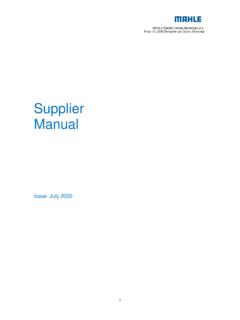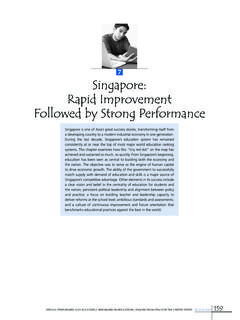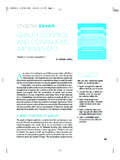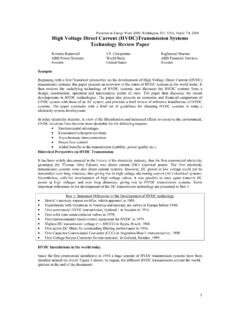Transcription of Serious Incident Framework - NHS England
1 Serious Incident Framework Supporting learning to prevent recurrence Serious Incident Framework Supporting learning to prevent recurrence OFFICIAL 1 NHS England INFORMATION READER BOXD irectorateMedicalCommissioning OperationsPatients and InformationNursingTrans. & Corp. StrategyFinancePublications Gateway Reference:03198 Document PurposeDocument NameAuthorPublication DateTarget AudienceAdditional Circulation ListDescriptionCross ReferenceAction RequiredTiming / Deadlines(if applicable)PolicyLondonSE1 6 LHPatient Safety DomainNHS EnglandSkipton House80 London RoadThis revised Framework explains the responsibilities and actions for dealing with Serious Incidents and the tools available.
2 It outlines the process and procedures to ensure that Serious Incidents are identified correctly, investigated thoroughly and, most importantly, learned from to prevent the likelihood of similar incidents happening again. To be implemented from 1 April 2015 NHS England Patient Safety Domain 27 March 2015 CCG Clinical Leaders, CCG Accountable Officers, Care Trust CEs, Foundation Trust CEs , Medical Directors, Directors of Nursing#VALUE!Revised Never Events Policy and FrameworkSerious Incident Framework March 2013 Implement policy within organisations providing NHS funded careSerious Incident Framework Superseded Docs(if applicable)Contact Details for further informationDocument Status0 This is a controlled document.
3 Whilst this document may be printed, the electronic version posted on the intranet is the controlled copy. Any printed copies of this document are not controlled. As a controlled document, this document should not be saved onto local or network drives but should always be accessed from the intranet. NB: The NHS Commissioning Board (NHS CB) was established on 1 October 2012 as an executive non-departmental public body. Since 1 April 2013, the NHS Commissioning Board has used the name NHS England for operational purposes. OFFICIAL 2 Serious Incident Framework First published: 2010 Updated: March 2015 Prepared by: NHS England , Patient Safety Domain OFFICIAL 3 Contents Foreword from Dr Mike Serious Incident Management at a glance.
4 7 Policy statement .. 8 Acknowledgements .. 9 Purpose .. 9 Introduction .. 11 Part One: Definitions and Thresholds .. 12 1. What is a Serious Incident ? .. 12 Assessing whether an Incident is a Serious Incident .. 14 Can a near miss be a Serious Incident ? .. 15 How are Serious incidents identified? .. 15 Risk management and prioritisation .. 16 Prioritising .. 16 Opportunities for investing time in learning .. 16 Prevalence .. 17 Framework application and interfaces with other sectors .. 17 Deaths in Custody- where health provision is delivered by the NHS .. 18 Serious Case Reviews and Safeguarding Adult Reviews .. 18 Domestic Homicide 19 Homicide by patients in receipt of mental health care.
5 19 Serious Incidents in National Screening Programmes .. 19 Part Two: Underpinning Principles .. 21 1. Seven Key 21 2. Accountability .. 24 Involvement of multiple commissioners .. 24 Involvement of multiple providers .. 25 3. Roles and Responsibilities for Managing Serious Incident .. 26 Providers of NHS-funded care .. 26 Commissioners of NHS- funded care .. 27 NHS England .. 29 Care quality Commission (CQC) .. 29 Monitor .. 29 NHS Trust Development Authority (TDA) .. 30 Part Three: The Serious Incident Management Process .. 31 1. Overview of the Serious Incident Management Process .. 31 2. Identification and immediate action .. 32 3. Reporting a Serious Incident .. 33 Follow up information.
6 34 OFFICIAL 4 Alerting the system : escalation and information sharing .. 34 4. Overview of the investigation process .. 36 Setting up the team .. 37 Involving and supporting those affected .. 37 Involving patients, victims and their families/carers .. 37 Staff .. 39 Agreeing the level/type of investigation .. 39 Final report and action plan .. 42 Final report .. 42 Action plan .. 43 Submission of Final Report, quality Assurance and Closure .. 43 Submission of Final Report .. 43 quality Assurance and Closure of the Investigation .. 44 5. Next steps .. 45 Appendix 1: Regional Investigation Teams: Investigation of homicide by those in receipt of mental health care .. 47 Appendix 2: Notification of Interested Bodies.
7 54 Appendix 3: Independent Investigation (level 3) .. 60 Appendix 4: Domestic Homicide Reviews .. 69 Appendix 5: Assigning Accountability: RASCI model .. 72 Appendix 6: Example Incident reporting forms (either template can be used) .. 75 Appendix 7: Communications .. 78 Appendix 8: Closure checklist .. 83 Glossary .. 84 References .. 88 OFFICIAL 5 Foreword Responding appropriately when things go wrong in healthcare is a key part of the way that the NHS can continually improve the safety of the services we provide to our patients. We know that healthcare systems and processes can have weaknesses that can lead to errors occurring and, tragically, these errors sometimes have Serious consequences for our patients, staff, services users and/or the reputation of the organisations involved themselves.
8 It is therefore incumbent on us all to continually strive to reduce the occurrence of avoidable harm. Over the last decade the NHS has made significant progress in developing a standardised way of recognising, reporting and investigating when things go wrong and a key part of this is the way the system responds to Serious incidents. Serious incidents in health care are events where the potential for learning is so great, or the consequences to patients, families and carers, staff or organisations are so significant that they warrant our particular attention to ensure these incidents are identified correctly, investigated thoroughly and, most importantly, trigger actions that will prevent them from happening again.
9 Following the implementation of the Health and Social Care Act 2012, a revised Serious Incident Framework was published in March 2013 to reflect the changed structures in the NHS. At the time we committed to review this Framework after a year of operation to understand how well the system was able to implement it. Therefore, over 2014 we have reviewed the Serious Incident Framework to ensure that it is fit for purpose and that it supports the need to take a whole- system approach to quality improvement. As part of this review we have continued to promote and build on the fundamental purpose of patient safety investigation, which is to learn from incidents, and not to apportion blame. We have also continued to endorse the application of the recognised system -based method for conducting investigations, commonly known as Root Cause Analysis (RCA), and its potential as a powerful mechanism for driving improvement.
10 This revised Framework has been developed in collaboration with healthcare providers, commissioners, regulatory and supervisory bodies, patients and families and their representatives, patient safety experts and independent expert advisors for investigation within healthcare. While the fundamental principles of Serious Incident management remain unchanged, a number of amendments have been made in order to; - emphasise the key principles of Serious Incident management; - more explicitly define the roles and responsibilities of those involved in the management of Serious Incident ; - highlight the importance of working in an open, honest and transparent way where patients, victims and their families are put at the centre of the process; - promote the principles of investigation best practice across the system .



















